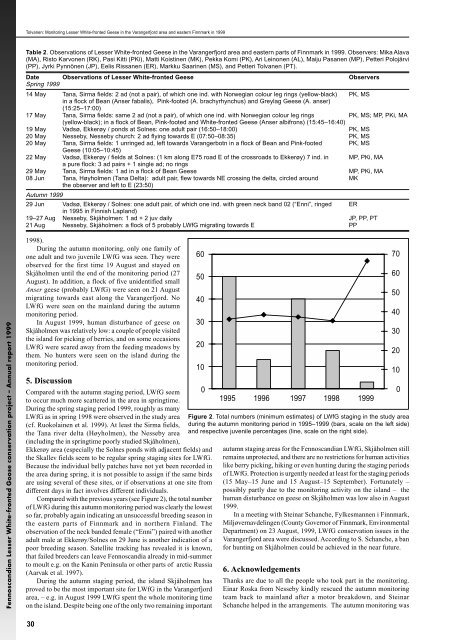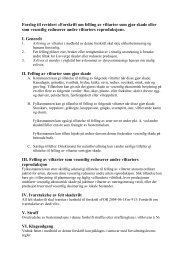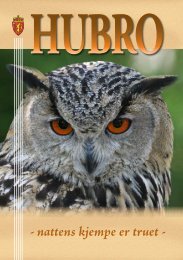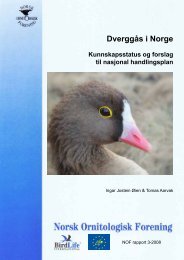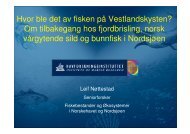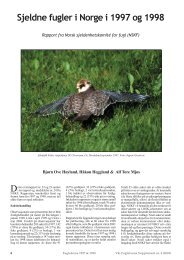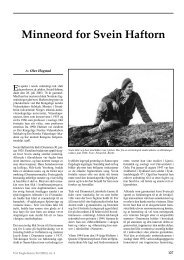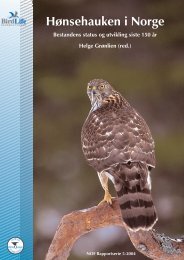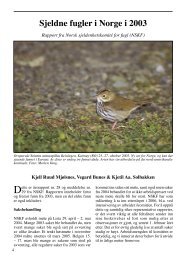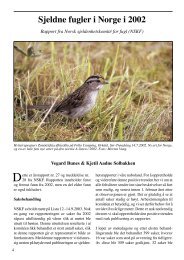Fennoscandian Lesser White-fronted Goose conservation project ...
Fennoscandian Lesser White-fronted Goose conservation project ...
Fennoscandian Lesser White-fronted Goose conservation project ...
You also want an ePaper? Increase the reach of your titles
YUMPU automatically turns print PDFs into web optimized ePapers that Google loves.
<strong>Fennoscandian</strong> <strong>Lesser</strong> <strong>White</strong>-<strong>fronted</strong> <strong>Goose</strong> <strong>conservation</strong> <strong>project</strong> – Annual report 1999<br />
Tolvanen: Monitoring <strong>Lesser</strong> <strong>White</strong>-<strong>fronted</strong> Geese in the Varangerfjord area and eastern Finnmark in 1999<br />
Table 2. Observations of <strong>Lesser</strong> <strong>White</strong>-<strong>fronted</strong> Geese in the Varangerfjord area and eastern parts of Finnmark in 1999. Observers: Mika Alava<br />
(MA), Risto Karvonen (RK), Pasi Kitti (PKi), Matti Koistinen (MK), Pekka Komi (PK), Ari Leinonen (AL), Maiju Pasanen (MP), Petteri Polojärvi<br />
(PP), Jyrki Pynnönen (JP), Eelis Rissanen (ER), Markku Saarinen (MS), and Petteri Tolvanen (PT).<br />
Date<br />
Spring 1999<br />
Observations of <strong>Lesser</strong> <strong>White</strong>-<strong>fronted</strong> Geese Observers<br />
14 May Tana, Sirma fields: 2 ad (not a pair), of which one ind. with Norwegian colour leg rings (yellow-black)<br />
in a flock of Bean (Anser fabalis), Pink-footed (A. brachyrhynchus) and Greylag Geese (A. anser)<br />
(15:25–17:00)<br />
PK, MS<br />
17 May Tana, Sirma fields: same 2 ad (not a pair), of which one ind. with Norwegian colour leg rings<br />
(yellow-black); in a flock of Bean, Pink-footed and <strong>White</strong>-<strong>fronted</strong> Geese (Anser albifrons) (15:45–16:40)<br />
PK, MS; MP, PKi, MA<br />
19 May Vadsø, Ekkerøy / ponds at Solnes: one adult pair (16:50–18:00) PK, MS<br />
20 May Nesseby, Nesseby church: 2 ad flying towards E (07:50–08:35) PK, MS<br />
20 May Tana, Sirma fields: 1 unringed ad, left towards Varangerbotn in a flock of Bean and Pink-footed<br />
Geese (10:05–10:45)<br />
PK, MS<br />
22 May Vadsø, Ekkerøy / fields at Solnes: (1 km along E75 road E of the crossroads to Ekkerøy) 7 ind. in<br />
a pure flock: 3 ad pairs + 1 single ad; no rings<br />
MP, PKi, MA<br />
29 May Tana, Sirma fields: 1 ad in a flock of Bean Geese MP, PKi, MA<br />
08 Jun Tana, Høyholmen (Tana Delta): adult pair, flew towards NE crossing the delta, circled around<br />
the observer and left to E (23:50)<br />
MK<br />
Autumn 1999<br />
29 Jun Vadsø, Ekkerøy / Solnes: one adult pair, of which one ind. with green neck band 02 (“Enni”, ringed<br />
in 1995 in Finnish Lapland)<br />
ER<br />
19–27 Aug Nesseby, Skjåholmen: 1 ad + 2 juv daily JP, PP, PT<br />
21 Aug Nesseby, Skjåholmen: a flock of 5 probably LWfG migrating towards E PP<br />
1998).<br />
During the autumn monitoring, only one family of<br />
one adult and two juvenile LWfG was seen. They were<br />
observed for the first time 19 August and stayed on<br />
Skjåholmen until the end of the monitoring period (27<br />
August). In addition, a flock of five unidentified small<br />
Anser geese (probably LWfG) were seen on 21 August<br />
migrating towards east along the Varangerfjord. No<br />
LWfG were seen on the mainland during the autumn<br />
monitoring period.<br />
In August 1999, human disturbance of geese on<br />
Skjåholmen was relatively low: a couple of people visited<br />
the island for picking of berries, and on some occasions<br />
LWfG were scared away from the feeding meadows by<br />
them. No hunters were seen on the island during the<br />
monitoring period.<br />
5. Discussion<br />
Compared with the autumn staging period, LWfG seem<br />
to occur much more scattered in the area in springtime.<br />
During the spring staging period 1999, roughly as many<br />
LWfG as in spring 1998 were observed in the study area<br />
(cf. Ruokolainen et al. 1999). At least the Sirma fields,<br />
the Tana river delta (Høyholmen), the Nesseby area<br />
(including the in springtime poorly studied Skjåholmen),<br />
Ekkerøy area (especially the Solnes ponds with adjacent fields) and<br />
the Skallev fields seem to be regular spring staging sites for LWfG.<br />
Because the individual belly patches have not yet been recorded in<br />
the area during spring, it is not possible to assign if the same birds<br />
are using several of these sites, or if observations at one site from<br />
different days in fact involves different individuals.<br />
Compared with the previous years (see Figure 2), the total number<br />
of LWfG during this autumn monitoring period was clearly the lowest<br />
so far, probably again indicating an unsuccessful breeding season in<br />
the eastern parts of Finnmark and in northern Finland. The<br />
observation of the neck banded female (“Enni”) paired with another<br />
adult male at Ekkerøy/Solnes on 29 June is another indication of a<br />
poor breeding season. Satellite tracking has revealed it is known,<br />
that failed breeders can leave Fennoscandia already in mid-summer<br />
to moult e.g. on the Kanin Peninsula or other parts of arctic Russia<br />
(Aarvak et al. 1997).<br />
During the autumn staging period, the island Skjåholmen has<br />
proved to be the most important site for LWfG in the Varangerfjord<br />
area, – e.g. in August 1999 LWfG spent the whole monitoring time<br />
on the island. Despite being one of the only two remaining important<br />
30<br />
60<br />
50<br />
40<br />
30<br />
20<br />
10<br />
0<br />
1995<br />
1996<br />
1997<br />
1998<br />
1999<br />
Figure 2. Total numbers (minimum estimates) of LWfG staging in the study area<br />
during the autumn monitoring period in 1995–1999 (bars, scale on the left side)<br />
and respective juvenile percentages (line, scale on the right side).<br />
autumn staging areas for the <strong>Fennoscandian</strong> LWfG, Skjåholmen still<br />
remains unprotected, and there are no restrictions for human activities<br />
like berry picking, hiking or even hunting during the staging periods<br />
of LWfG. Protection is urgently needed at least for the staging periods<br />
(15 May–15 June and 15 August–15 September). Fortunately –<br />
possibly partly due to the monitoring activity on the island – the<br />
human disturbance on geese on Skjåholmen was low also in August<br />
1999.<br />
In a meeting with Steinar Schanche, Fylkesmannen i Finnmark,<br />
Miljøvernavdelingen (County Governor of Finnmark, Environmental<br />
Department) on 23 August, 1999, LWfG <strong>conservation</strong> issues in the<br />
Varangerfjord area were discussed. According to S. Schanche, a ban<br />
for hunting on Skjåholmen could be achieved in the near future.<br />
6. Acknowledgements<br />
Thanks are due to all the people who took part in the monitoring.<br />
Einar Roska from Nesseby kindly rescued the autumn monitoring<br />
team back to mainland after a motor breakdown, and Steinar<br />
Schanche helped in the arrangements. The autumn monitoring was<br />
70<br />
60<br />
50<br />
40<br />
30<br />
20<br />
10<br />
0


